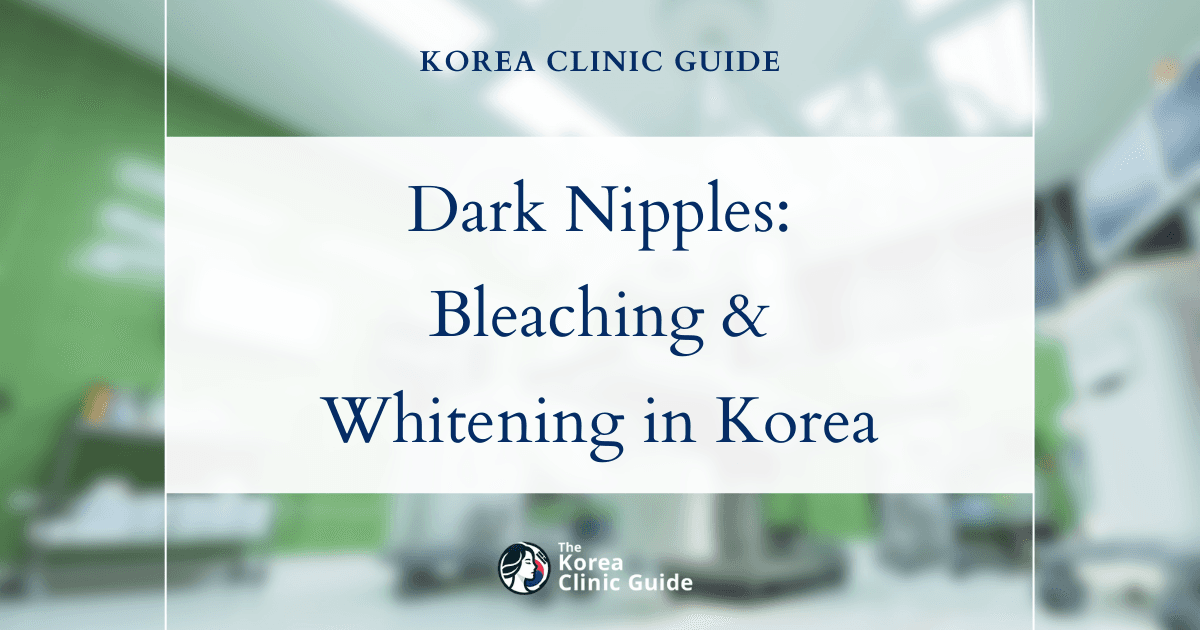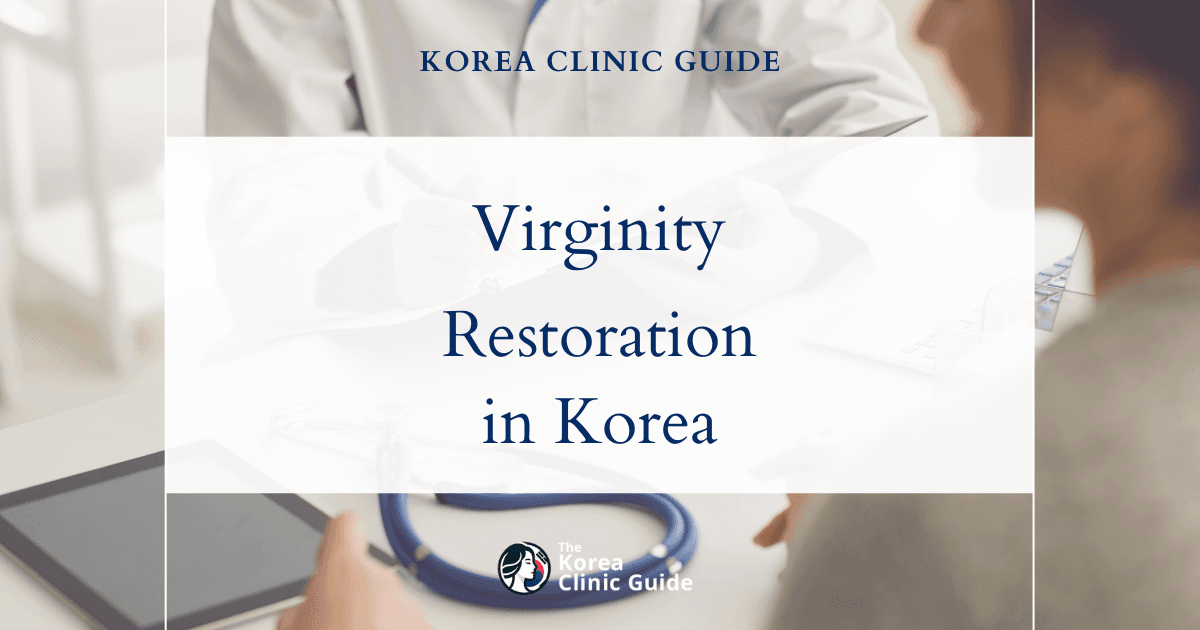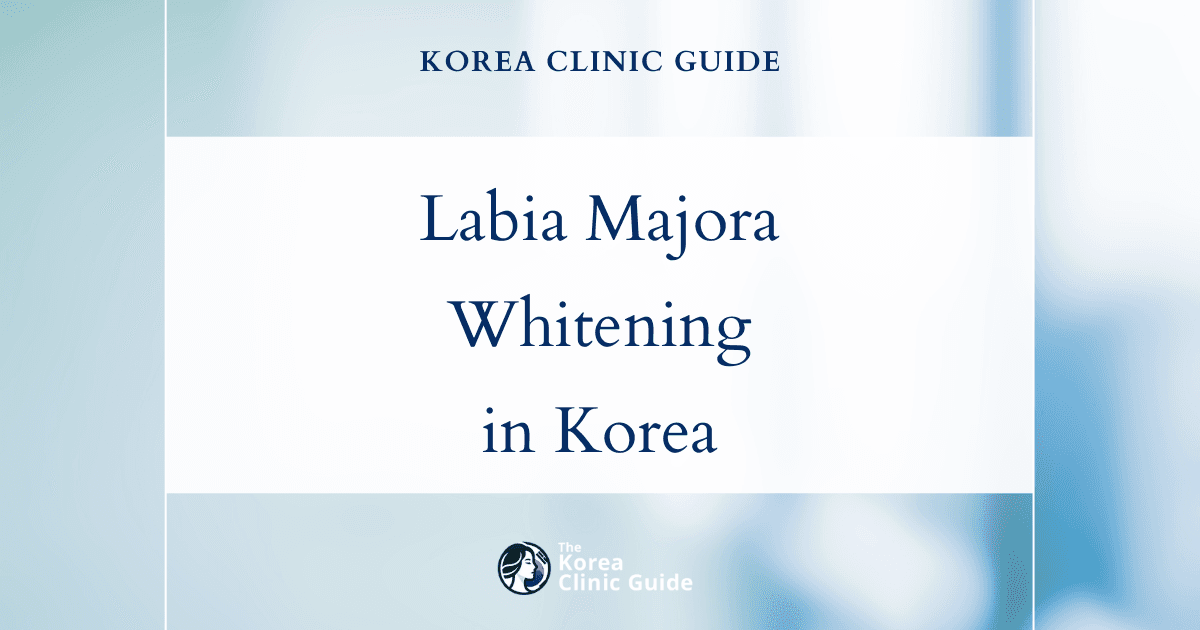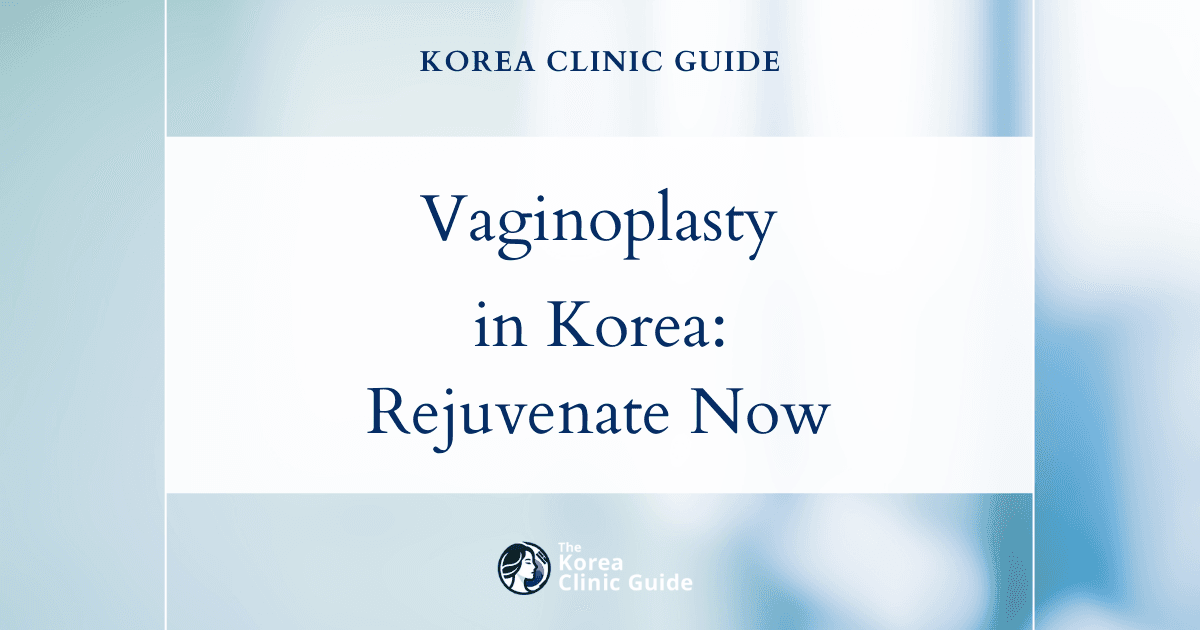Medical Tourism Blog
Revision Labiaplasty in Korea | Best Clinics, Costs, Procedure Types & More

Table of contents
- What Is Revision Labiaplasty?
- Best Revision Labiaplasty Clinics in Korea
- Getting Revision Labiaplasty in Korea
- Cost of Revision Labiaplasty in Korea
- Alternatives to Revision Labiaplasty
- Conclusion
Considering treatment in Korea? Everything you need to know e.g. — how to avoid scams, visas, interpreters, recovery tips — in our Medical Tourism Master Guide. Plan with confidence in minutes, not weeks!
Are you dissatisfied with the results of your labiaplasty and seeking a solution that restores both comfort and confidence? Revision labiaplasty in Korea, renowned for its cutting-edge techniques and expert surgeons, might be the key to addressing your concerns.
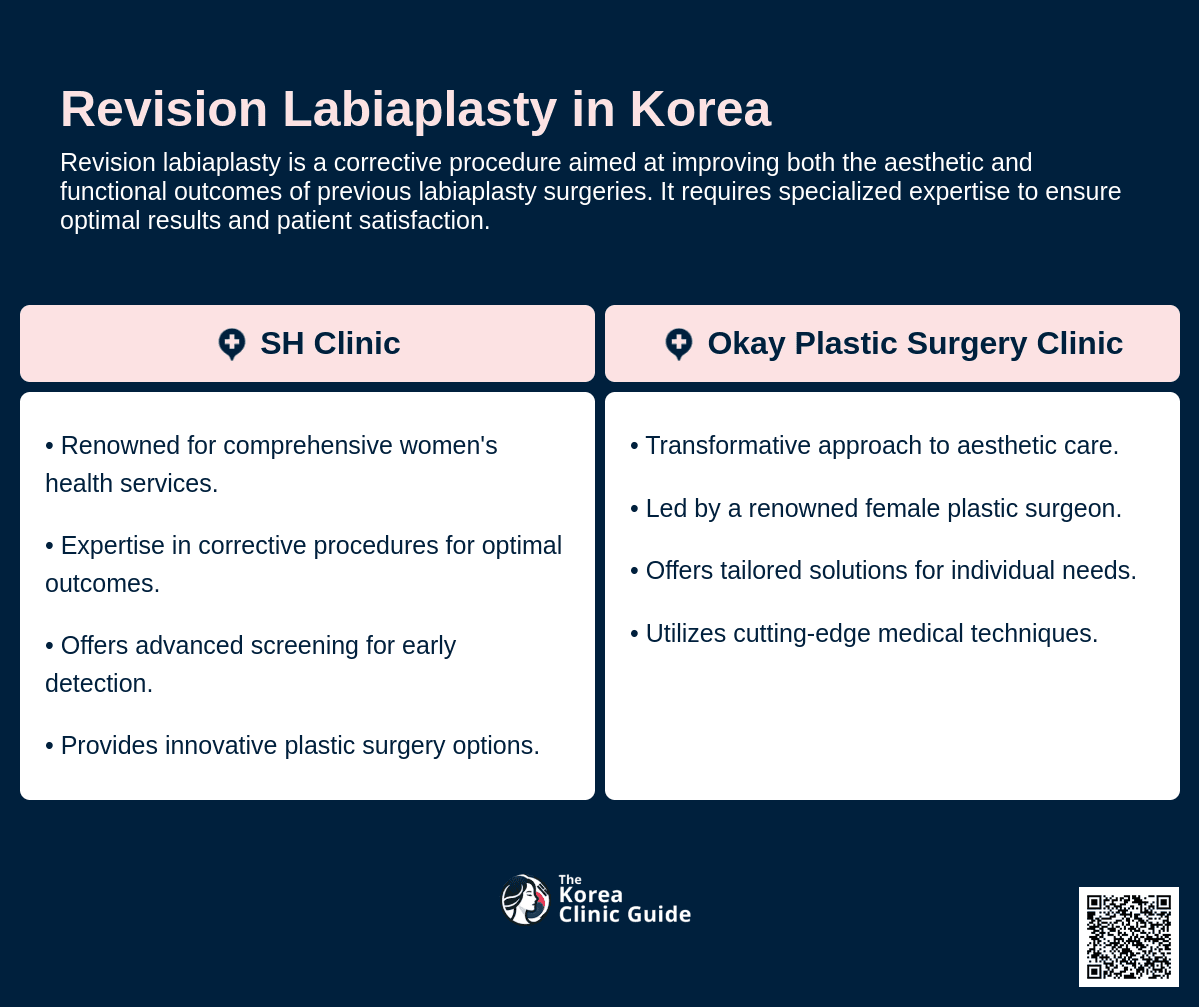
What Is Revision Labiaplasty?
Revision labiaplasty is a specialized surgical procedure performed to correct, refine, or improve the results of a prior labiaplasty. Labiaplasty itself is a cosmetic or functional surgery aimed at altering the labia minora (inner vaginal lips) and/or the labia majora (outer vaginal lips), generally for aesthetic purposes, to reduce discomfort, or to address congenital abnormalities. However, sometimes the initial surgery may not yield satisfying results or may result in complications, necessitating a secondary procedure known as revision labiaplasty.
Reasons for Revision Labiaplasty
This secondary procedure can be required for various reasons:
- Asymmetry: Post-surgery, some patients might notice uneven or asymmetrical labial edges that they wish to correct.
- Excessive or Insufficient Reduction: Some patients may feel that too much or too little tissue was removed in the original procedure, impacting either the aesthetic appearance or functional comfort.
- Scar Tissue: Poor healing or complications can result in noticeable or painful scar tissue that interferes with everyday activities.
- Texture and Color Discrepancies: Patients might observe irregularities in skin texture or differences in pigmentation that can affect their confidence.
- Functional Issues: Issues such as discomfort during activities, including intercourse and exercise, might necessitate a revision.
The Procedure
The revision labiaplasty procedure is meticulously planned, considering the distinct anatomy and specific requirements of the patient. Here are the main steps involved:
- Consultation and Assessment: Patients initially undergo an in-depth consultation with their surgeon to discuss their concerns and desired outcomes. This may include an assessment of their initial labiaplasty results, medical history, and a physical examination.
- Planning: Detailed surgical planning is crucial for successful outcomes. The surgeon may use photographs or digital imaging to explain the anticipated results and guide the surgical approach.
- Anesthesia: The procedure is typically performed under local anesthesia with sedation or general anesthesia, depending on the complexity and patient's comfort.
- Surgical Technique: The surgeon carefully revises the labial tissues to address the specific issues identified. Techniques may include trimming excess tissue, reshaping the labia, correcting asymmetry, and minimizing scar tissue.
- Closure: Specialized suturing techniques are employed to ensure delicate and precise closure, promoting better healing and reducing the risk of noticeable scarring.
Recovery and Aftercare
Recovery from revision labiaplasty can vary, but patients can generally expect:
- Initial Downtime: A few days to a week of rest is often recommended to minimize swelling and discomfort.
- Follow-up Appointments: Regular check-ups are scheduled to monitor healing and promptly address any complications.
- Activity Restrictions: Patients are usually advised to refrain from activities that strain the area, such as vigorous exercise or sexual intercourse, for several weeks.
- Pain Management: Over-the-counter or prescribed pain medications may be used to manage discomfort.
The ultimate goal of revision labiaplasty is to achieve a balanced, aesthetically pleasing, and functionally comfortable result that aligns with the patient's expectations. Being a highly individualized procedure, it demands the expertise of a seasoned surgeon equipped with a nuanced understanding of female genital anatomy.
Who is Revision Labiaplasty for?
-
Individuals Experiencing Physical Discomfort:
- Those who have undergone a previous labiaplasty and still experience physical discomfort or pain due to residual excess skin.
- Patients who feel discomfort from twisted, pinched, or tugged excess labial tissue during exercise, physical activities, or intercourse.
-
People Seeking Improved Hygiene:
- Individuals facing hygiene issues or recurrent urinary tract infections (UTIs) due to difficulty in cleansing caused by excess labial tissue.
-
Those with Aesthetic Concerns:
- People who are dissatisfied with the cosmetic outcome of a previous labiaplasty and wish to address issues like asymmetry or shape irregularities of the labia minora or labia majora.
-
Post-Gender Affirming Surgery Patients:
- Those who have had gender-affirming surgery and seek further refinement or correction of the labial appearance created from existing genital tissue.
-
Individuals Affected by Life Changes:
- Patients who notice changes in their labia due to puberty, hormonal changes, pregnancy, childbirth, or weight fluctuations and seek a revision to achieve renewed satisfaction.
-
Those with Emotional or Psychological Concerns:
- Individuals who experience reduced self-esteem, confidence, or sexual well-being due to dissatisfaction with the appearance of their genitalia after a previous labiaplasty.
Best Revision Labiaplasty Clinics in Korea
Listed below are the best clinics in Korea:
| Clinic Name | Key Features | Special Techniques |
|---|---|---|
| SH Clinic | Comprehensive range of specialized medical procedures, focus on women's and men's health, personalized and state-of-the-art treatments | Expertise in revision labiaplasty, advanced screening and checkups, innovative plastic surgery options |
| Okay Plastic Surgery Clinic | Transformative approach to aesthetic care, sincerity, precision, individualized treatment | Specialized aesthetic services, tailored solutions, cutting-edge medical techniques |
SH Clinic
SH Clinic in Sinsa is a premier medical facility in Korea, renowned for its comprehensive range of specialized medical procedures tailored to meet the diverse needs of its patients. With a focus on both women's and men's health, the clinic offers a holistic approach to healthcare, ensuring that each patient receives personalized and state-of-the-art treatments. The clinic's commitment to enhancing patient well-being is evident through its extensive services, which include women's health, male urology, couple's therapy, and sexual health treatments.
- Expertise in Revision Labiaplasty: SH Clinic stands out as the best choice for revision labiaplasty in Korea due to its team of highly skilled surgeons who specialize in corrective procedures, ensuring optimal aesthetic and functional outcomes.
- Comprehensive Women's Health Services: The clinic offers a wide array of women's health services, from incontinence treatment to vaginal dryness solutions, providing a supportive environment for all aspects of feminine health.
- Advanced Screening and Checkups: With cutting-edge screening systems for cervical and ovarian cancer, SH Clinic prioritizes early detection and prevention, enhancing patient care and peace of mind.
- Innovative Plastic Surgery Options: The Women's Plastic Surgery Clinic at SH Clinic provides a range of procedures, including implant vaginoplasty and labia majora plastic surgery, ensuring patients have access to the latest advancements in aesthetic surgery.
- Commitment to Patient Satisfaction: SH Clinic's dedication to patient satisfaction is reflected in its personalized care approach, ensuring each patient receives tailored treatments that address their unique health concerns and goals.
You can check out their website here: SH Clinic Website
Okay Plastic Surgery Clinic
Okay Plastic Surgery Clinic stands out as the premier destination for revision labiaplasty in Korea due to its transformative approach to aesthetic care, which prioritizes sincerity, precision, and individualized treatment. The clinic is led by a team of specialized professionals, including a renowned female plastic surgeon with extensive experience, ensuring that each patient receives a tailored solution that aligns with their unique needs and aspirations. Beyond offering medical procedures, Okay Plastic Surgery Clinic provides a comprehensive journey of personal transformation, guided by expertise, empathy, and cutting-edge medical techniques. This commitment to excellence is reflected in their extensive range of specialized aesthetic services, which are meticulously designed to address diverse patient needs, making them the best choice for those seeking revision labiaplasty in Korea.
You can check out their website here: Okay Plastic Surgery Clinic Website
Getting Revision Labiaplasty in Korea
Revision labiaplasty is a surgical procedure aimed at correcting or enhancing the results of a previous labiaplasty. This operation is typically sought by individuals who are not satisfied with the aesthetic or functional outcomes of their initial surgery. In Korea, the procedure is performed by highly skilled and experienced plastic surgeons who specialize in delicate and precise surgical techniques.
Preparation for the Surgery
Before undergoing revision labiaplasty, a thorough consultation with a qualified plastic surgeon is essential. The surgeon will conduct a comprehensive assessment to understand the patient's concerns and review the results of the initial labiaplasty. Pre-operative evaluations may include physical examinations, photographic documentation, and detailed discussions about the desired outcomes and potential risks.
Surgical Techniques
The surgical techniques involved in revision labiaplasty can vary depending on the specific issues that need correction. Here are some common scenarios and respective approaches:
-
Excess Tissue Removal: If the initial surgery left too much tissue, resulting in a bulky or uneven appearance, the surgeon will carefully excise the excess tissue. This requires meticulous precision to ensure symmetry and natural contours.
-
Scar Revision: Some patients may experience prominent scarring or uncomfortable scar tissue formation. Revision techniques include softening the scars through scar tissue removal or grafting new tissue to create a smoother appearance.
-
Tissue Grafting: In cases where too much tissue was removed during the primary surgery, the surgeon may employ tissue grafting techniques to add volume and recreate a more natural look. This may involve using local flaps or transferring tissue from another area of the body.
-
Clitoral Hood Reduction: For patients who experience discomfort or aesthetic concerns due to an enlarged or asymmetrical clitoral hood after the initial surgery, a clitoral hood reduction may be performed in conjunction with the revision labiaplasty.
Anesthesia and Duration
Revision labiaplasty in Korea is typically performed under local anesthesia with sedation or general anesthesia, depending on the complexity of the procedure and the patient's preference. The surgery can take anywhere from one to three hours, depending on the extent of the revision required.
Post-Operative Care
Post-operative care is crucial for optimal healing and outcomes. Patients may experience mild to moderate discomfort, swelling, and bruising during the first few days following the surgery. Surgeons in Korea provide detailed post-operative instructions, which usually include:
-
Pain Management: Prescribed medications to manage pain and reduce inflammation.
-
Hygiene and Wound Care: Guidelines on keeping the surgical area clean and dry to prevent infections.
-
Activity Restrictions: Recommendations to avoid strenuous activities, heavy lifting, and sexual intercourse for several weeks to allow proper healing.
Follow-up appointments are scheduled to monitor the healing process, address any concerns, and ensure that the patient is progressing well.
Choosing the Right Surgeon in Korea
Selecting a board-certified plastic surgeon with extensive experience in labiaplasty revisions is crucial. Korea is renowned for its advanced medical facilities and cutting-edge technology, offering patients access to some of the world's best plastic surgeons. It's essential to review the surgeon's credentials, consult before the procedure, and examine before-and-after photos of previous labiaplasty revisions to make an informed decision.
Cost of Revision Labiaplasty in Korea
| Procedure Price | Korean Won (₩) | USD ($) |
|---|---|---|
| Low Price | ₩9,500,000 | $6700 |
| High Price | ₩9,500,000 | $6700 |
Exchange rate as of 2025-05-01: 1 KRW = 0.0007 USD
Please note that these prices are approximate guidelines and can vary significantly based on the clinic and your individual circumstances.
Revision labiaplasty, a corrective procedure to address complications or dissatisfaction from a previous labiaplasty, can vary significantly in cost depending on the country. Here's a comparison of the costs in Korea and other countries, including the USA:
Korea
In Korea, revision labiaplasty is known for being not only high-quality but also more affordable compared to many Western countries. The cost of the procedure generally ranges from $3,500 to $5,500 USD. This price often includes consultation fees, anesthesia, and post-operative care, making it a comprehensive package.
USA
In the United States, the cost of revision labiaplasty can range widely based on the practitioner’s experience, the complexity of the procedure, and geographic location. On average, patients can expect to pay between $5,000 and $8,000 USD. This cost may or may not include additional fees such as consultations, anesthesia, and follow-up visits, which can add to the overall expense.
United Kingdom
In the UK, revision labiaplasty is also a costly procedure. The average expense for this surgery ranges from £3,500 to £7,000 GBP (approximately $4,500 to $9,000 USD). Similar to the USA, these costs may be exclusive of secondary fees like consultation, anesthesia, and aftercare services.
Australia
In Australia, the cost for revision labiaplasty is relatively high, typically falling between AUD $5,000 and $9,000 (approximately $3,500 to $6,500 USD). The price can vary based on factors such as the surgeon’s reputation and the complexity of the required revisions.
Canada
Canadian clinics charge between CAD $5,000 and $10,000 (approximately $3,800 to $7,500 USD) for revision labiaplasty. Similar to other Western nations, this cost might not cover all auxiliary fees, potentially raising the overall expenditure for the patient.
Comparative Insights
While Korea offers competitive and often lower pricing compared to other countries like the USA, UK, Australia, and Canada, it's important to consider all aspects of medical care including the surgeon’s qualifications, the quality of the facilities, and the comprehensive nature of the service package.
Alternatives to Revision Labiaplasty
When considering alternatives to revision labiaplasty, it's critical to weigh the benefits and suitability of each option based on individual needs and concerns. Here are three suitable alternatives:
1. Non-Surgical Laser Treatments
Non-surgical laser treatments provide a less invasive option to address labial discomfort and cosmetic concerns without the need for surgical intervention. These treatments utilize laser energy to stimulate collagen production, enhancing tissue health and tightness.
How It Works:
- Procedure: The laser energy is targeted at the labial tissues to improve elasticity and reduce excess tissue.
- Benefits: Minimal recovery time, reduced risk of complications compared to surgical procedures, and generally less discomfort post-treatment.
Ideal for:
- Individuals seeking mild to moderate improvements in labial appearance and function without undergoing surgery.
- Those interested in reducing irritation or discomfort during physical activities or intercourse.
2. Fillers for Labia Enhancement
Hyaluronic acid fillers are another non-surgical alternative, particularly suitable for those seeking labial augmentation rather than reduction. This method focuses on increasing the volume of the labia majora to create a more balanced or aesthetically pleasing appearance.
How It Works:
- Procedure: Injectable hyaluronic acid or other biocompatible fillers are administered into the labia majora to enhance volume and symmetry.
- Benefits: Immediate results, minimal downtime, and the procedure can be customized to achieve desired aesthetic outcomes.
Ideal for:
- Individuals interested in enhancing the fullness of the labia majora.
- Those who may have experienced volume loss due to aging or hormonal changes.
3. Hormonal Therapy
For individuals whose labial changes are influenced by hormonal fluctuations, such as those occurring during menopause or postpartum periods, hormonal therapy can be a viable option. This approach focuses on restoring hormonal balance to mitigate symptoms like tissue thinning and discomfort.
How It Works:
- Procedure: Hormonal therapy involves the use of prescribed treatments (e.g., estrogen creams) to rejuvenate labial tissues.
- Benefits: Improved tissue health, reduction in dryness and discomfort, and a non-invasive approach.
Ideal for:
- Women experiencing labial discomfort due to hormonal imbalances, particularly during menopause.
- Those looking for a non-surgical way to improve labial tissue health and function.
Each of these alternatives provides varying benefits and addresses different aspects of labial concerns. It is essential to consult with a qualified healthcare provider to determine the most appropriate option based on individual circumstances and goals.
Conclusion
In conclusion, Revision Labiaplasty in Korea stands as a beacon of hope for those seeking to rectify unsatisfactory results from previous surgeries. Renowned for cutting-edge medical technology, highly skilled surgeons, and a patient-centric approach, Korea offers a compelling option for those in search of expertise and care. With meticulous attention to detail and a commitment to restoring both function and aesthetic harmony, the country continues to strengthen its reputation as a global hub for advanced cosmetic and reconstructive procedures. Ultimately, patients can expect not only an improved physical outcome but also a renewed sense of confidence and well-being.
